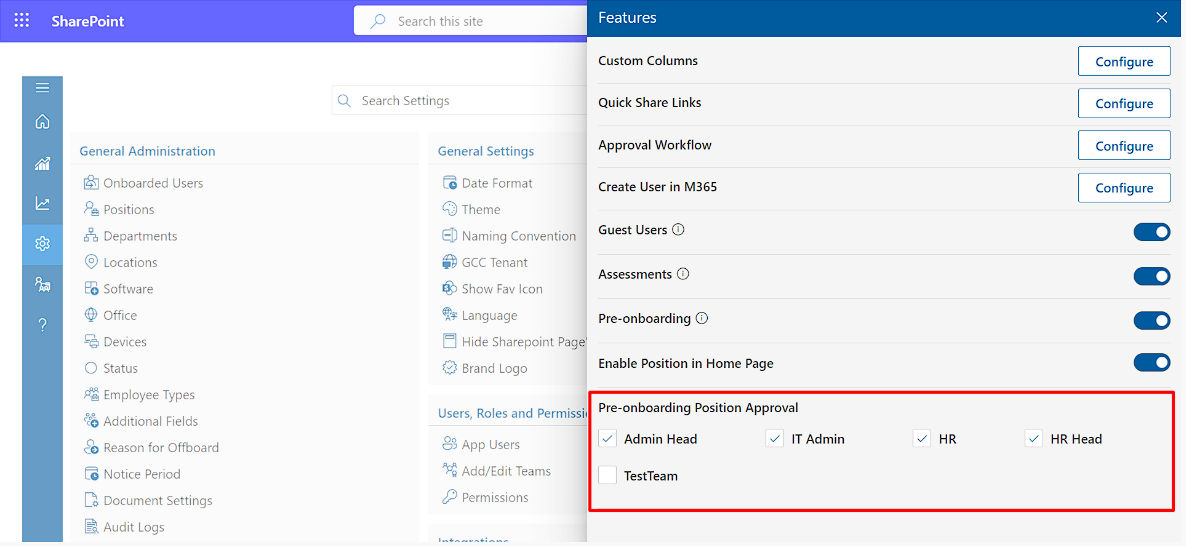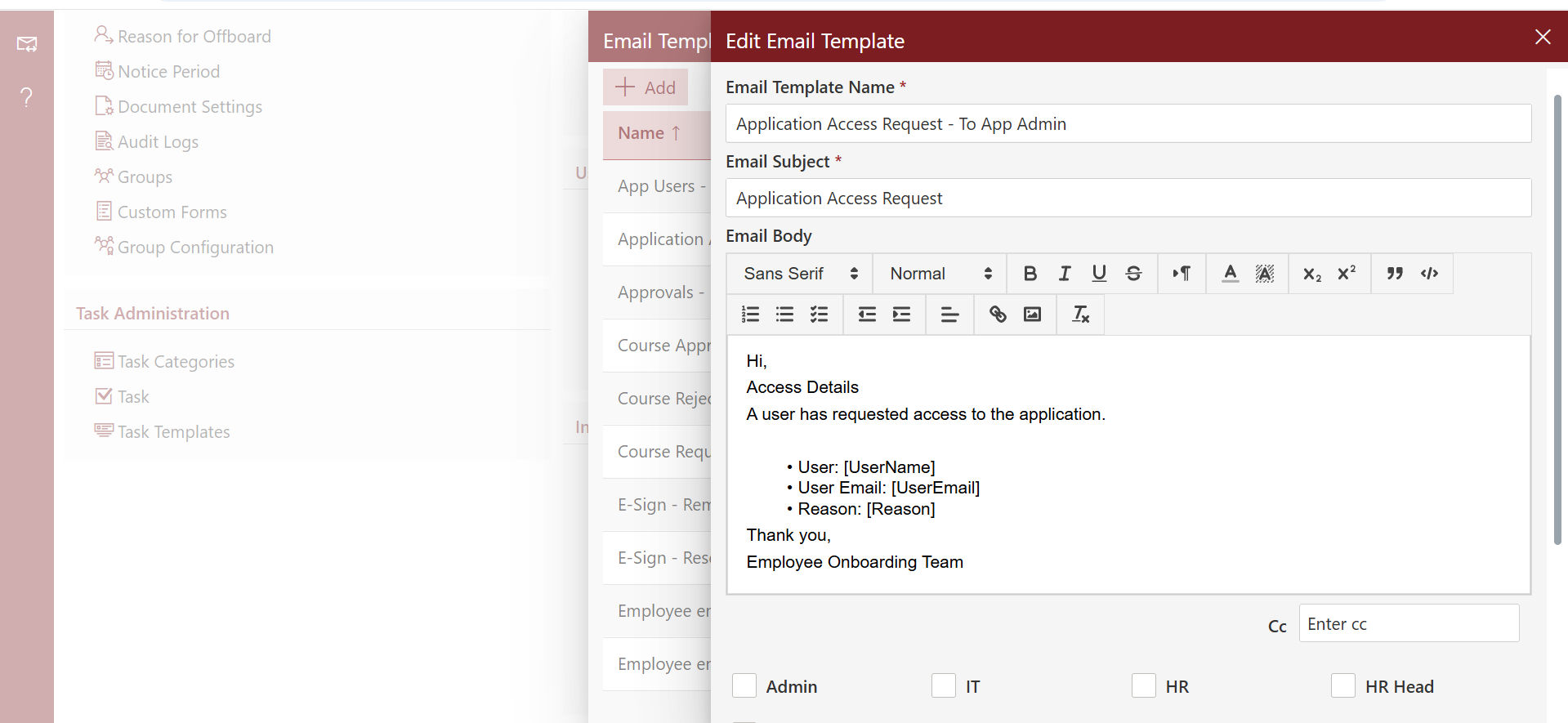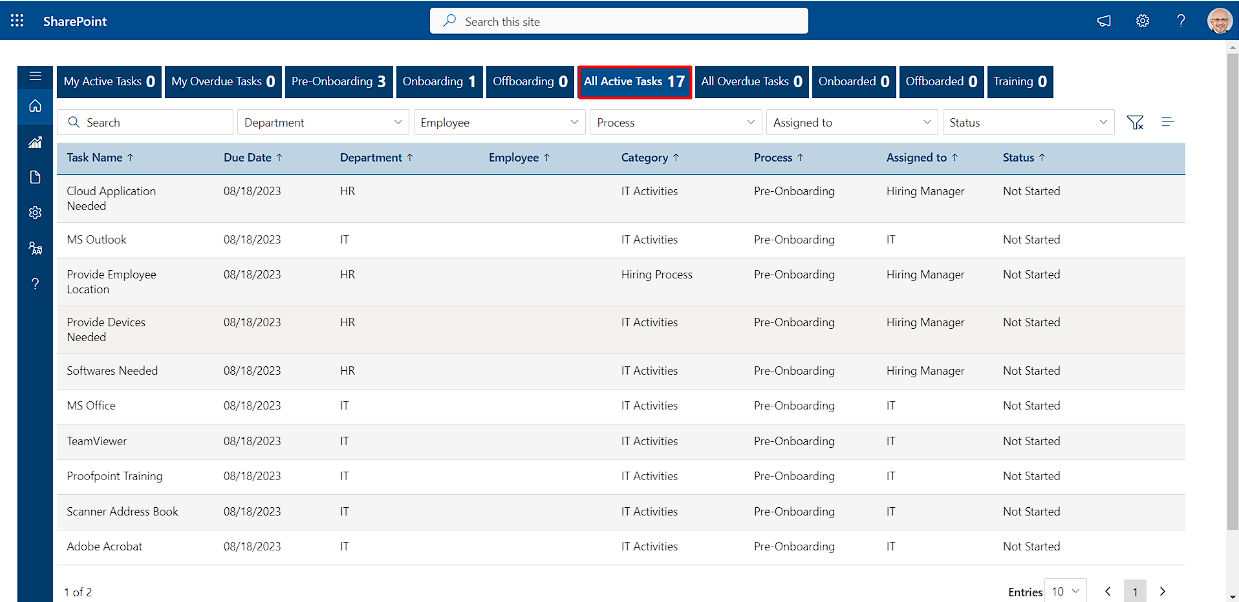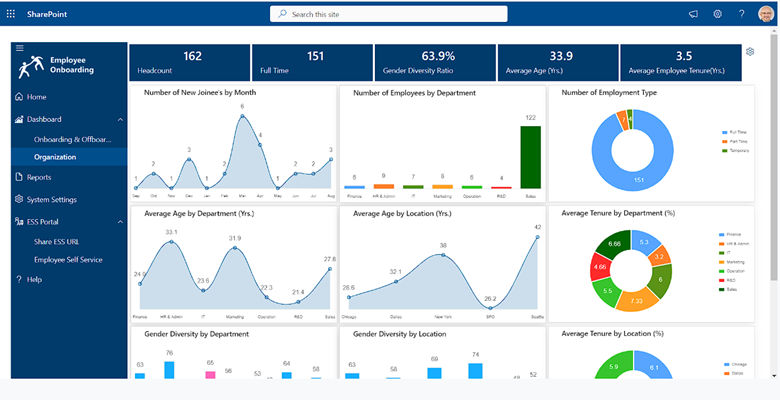
An effective onboarding program is essential for setting up new hires for success right from the start. With the support of employee onboarding software, the experience becomes more streamlined, consistent, and engaging. It is the first impression a new employee has with your company, playing a critical role in shaping their perception and long-term engagement.
✨
Quick Read
Summary generated by AI, reviewed for accuracy.
An effective onboarding program ensures new hires feel welcomed, confident, and aligned with company goals from day one. It boosts productivity, engagement, and retention through structured support and clear role expectations.
By leveraging digital tools and paperless onboarding processes, organizations can streamline workflows, enhance consistency, and deliver a seamless employee experience. Investing in a strong onboarding program builds long-term success and strengthens employer branding.
Too busy to read?
Click here to listen on the go!
A well-structured online onboarding process ensures new employees feel welcomed, gain clarity about their roles, and achieve productivity more quickly. Research indicates that companies with strong onboarding practices improve new hire retention by up to 50% and experience nearly 60% higher engagement levels among employees Gallup, 2022.
In this guide, we’ll explore how to create an onboarding program that not only gets new hires up to speed but also boosts employee morale, job satisfaction, and retention. Whether you are a small business or a large corporation, implementing a comprehensive onboarding program is a step toward long-term success.
What is an Onboarding Program?
An onboarding program is a structured process designed to help new employees quickly adapt to their roles and the organization. It goes beyond basic introductions, guiding new hires through the company’s culture, policies, values, and expectations. The program typically includes orientation sessions, introductions to team members, role-specific training, and familiarization with the tools and systems they will use daily.
For example, and IT Employee Onboarding Checklist may outline steps such as setting up access credentials, introducing security protocols, and providing training on company software to ensure seamless integration from day one.
The primary goal of an onboarding program is to make employees feel welcome, supported, and fully prepared so they can begin their work with confidence. A strong program also improves job satisfaction, enhances retention, and accelerates productivity. Organizations today are increasingly turning to Onboarding Solutions that automate and streamline these processes, ensuring consistency and efficiency across all new hires.
While the details of onboarding may differ across companies, the focus remains the same, helping employees settle in smoothly and perform successfully in their new roles.
Why an Effective Onboarding Program Matters
Onboarding is more than just completing paperwork it is about creating a welcoming experience that helps new employees feel connected to the organization from their very first day. It plays a vital role in integrating new hires into the company culture, setting clear expectations, and providing the tools they need to succeed.
A new employee onboarding program enables employees to adapt to their roles faster, stay engaged, and perform at a higher level. Research shows that organizations with strong onboarding processes improve retention rates by 82% and boost employee engagement by 70%. Additionally, companies with effective onboarding report a 50% increase in productivity, proving that the impact of onboarding extends far beyond the initial weeks of employment.
With these outcomes in mind, it’s evident that investing in a strong onboarding program is a critical step toward building a motivated, loyal, and high-performing workforce.
Challenges of Onboarding Programs
While an effective onboarding program delivers significant benefits, it also comes with its fair share of challenges. Many organizations struggle to design a process that is both efficient and engaging, especially as workplaces become more hybrid or remote. Below are some of the most common hurdles companies encounter during onboarding:
- Lack of Time and Resources
Onboarding requires careful planning and commitment. However, many HR teams are already stretched thin, making it difficult to dedicate the necessary time and resources to support new hires effectively. Leveraging modern Onboarding Tools can help streamline repetitive tasks and free up HR professionals to focus on meaningful interactions. - Inconsistent Onboarding Experience
Without standardization, new hires may receive different onboarding experiences depending on their role, department, or manager. This inconsistency can create confusion, lower engagement, and hinder smooth integration. - Overloading New Hires with Information
A common pitfall is overwhelming employees with too much information in the first few days. Between training sessions, documentation, and introductions, it’s easy for new hires to experience information overload making it harder for them to absorb and apply what they’ve learned. - Failure to Address Company Culture
Onboarding often focuses heavily on technical skills and role-specific tasks, while overlooking cultural integration. Introducing employees to company values, team dynamics, and workplace norms is crucial for long-term engagement and belonging. - Lack of Follow-up and Support
Onboarding shouldn’t stop after the first week or even the first month. Many organizations fail to provide ongoing support or structured follow-up, which can negatively impact job satisfaction and increase the risk of early turnover. Using Onboarding Software for Remote Workers ensures consistent follow-ups, check-ins, and engagement even when teams are distributed.
Key Benefits of an Effective Onboarding Program
An effective onboarding program provides far more than just a smooth start for employees it builds the foundation for long-term engagement, satisfaction, and success. Here are the most important benefits:
- Increases Retention
A structured New Hire Onboarding process reduces turnover by helping employees feel supported and valued from the start. When new hires are welcomed with clarity and consistency, they are more likely to stay long-term, lowering recruitment costs and improving workforce stability. - Boosts Engagement
Onboarding helps employees feel connected to their role and the company from day one. Engaged employees are more motivated, more collaborative, and more likely to contribute above and beyond expectations. - Enhances Productivity
With the right resources, training, and support, new employees can quickly ramp up to full productivity. This faster integration helps organizations meet business goals more efficiently and strengthens overall performance. - Aligns Company Culture
Onboarding ensures new hires clearly understand your organization’s values, mission, and culture. This cultural alignment fosters collaboration, trust, and teamwork creating a stronger sense of unity across the organization
Also Read: Benefits of an Employee Onboarding Program - Improves Job Satisfaction
An organized and thoughtful onboarding program shows employees that the company is invested in their growth. This leads to higher job satisfaction, stronger morale, and a more motivated workforce. - Strengthens Employer Brand
A positive onboarding experience not only benefits employees but also enhances the company’s reputation as a great place to work. New hires who feel welcomed and supported are more likely to share their experiences, boosting the employer brand and attracting top talent. - Drives Consistency with Technology
Modern organizations increasingly rely on Onboarding Automation to ensure consistency and efficiency in the process. Automation minimizes manual errors, standardizes communication, and allows HR teams to deliver a seamless experience at scale. - Reduces Time-to-Competency
A well-structured onboarding program accelerates how quickly new employees reach full performance. With clear guidance, resources, and support, hires can adapt faster and begin contributing meaningfully to less time. - Builds Stronger Relationships
Onboarding fosters early connections between employees, managers, and teams. By encouraging collaboration and communication, it strengthens professional relationships and reduces the sense of isolation, especially for remote or hybrid workers. - Ensures Compliance and Risk Management
An effective onboarding program educates employees about company policies, legal requirements, and industry regulations. This not only protects the organization from compliance risks but also gives employees confidence in navigating rules and responsibilities.
Step-by-Step Guide to Creating an Effective Onboarding Program
Designing and employee onboarding program isn’t just about logistics, it’s about creating a clear, consistent, and supportive journey that helps employees succeed from day one and beyond. Below is an expanded breakdown of each stage to help you build a complete onboarding strategy:
Preboarding: Start Before Day One

Preboarding sets the foundation by preparing employees before they even arrive. It reduces first-day anxiety and ensures new hires feel valued and excited.
- Send Welcome Packages: Provide a personalized email, a welcome kit with company swag, and required paperwork. This makes the new hire feel like part of the team before they walk in the door.
- Create a Personalized Experience: Go beyond one-size-fits-all. For example, sales professionals might receive access to CRM tutorials, while IT specialists may get security training or workstation setup instructions. Personalization shows attention to detail and care.
- Set Up Equipment: Ensure laptops, logins, ID cards, or software tools are ready ahead of time. Nothing frustrates a new hire more than spending the first day waiting for access to basic tools.
First Day: Making a Lasting Impression
The first day of a new employee onboarding program is a defining moment. A positive start shapes long-term engagement and productivity.

- Welcome Meeting: Schedule a session with HR or leadership to introduce the company’s mission, vision, and values. This helps new hires connect emotionally to the organization.
- Office Tour or Virtual Introductions: Whether onsite or remote, introductions to team members and workplace tools foster inclusion and belonging. Virtual teams should prioritize video calls and collaborative icebreakers.
- Set Clear Expectations: Discuss role responsibilities, immediate priorities, and short-term performance goals. This clarity eliminates confusion and builds confidence right from the start.
Week One: Providing Structure and Support
The first week of an employee onboarding program is crucial for building momentum, combining structured training, meaningful relationship-building, and supportive guidance to set new hires up for success.
- Training and Orientation: Offer a mix of role-specific training, compliance modules, and introductions to company systems. This helps employees hit the ground running without being overwhelmed. A well-planned training schedule also builds confidence and accelerates learning.
- Mentor or Buddy System: Pair each new hire with a mentor or buddy who can answer questions, provide insider tips, and support cultural integration. This peer connection is invaluable in reducing stress. It also creates an immediate sense of belonging and trust within the team.
- Check-Ins: HR or managers should schedule regular touchpoints to ask how the new hire is settling in. These conversations allow issues to be addressed early and reinforce that the company cares. Frequent check-ins strengthen communication and show employees they are valued.
Month One: Developing Skills and Confidence
By the end of the first month, new hires should feel more comfortable in their roles and ready to contribute independently.
- Hands-On Training: Assign meaningful projects or real-life scenarios so employees can apply their learning and build confidence.
- Ongoing Feedback: Provide constructive, consistent feedback. Recognizing early wins keeps motivation high, while addressing gaps ensures growth.
- Team Integration: Encourage participation in team meetings, cross-department collaboration, and social activities. Strong workplace relationships are key to driving employee engagement from the start.
Beyond the First Month: Long-Term Engagement and Growth
Onboarding doesn’t end after 30 days. Continued support ensures employees remain motivated, aligned, and engaged for the long term.
- Ongoing Development: Offer continuous learning opportunities such as e-learning, leadership workshops, and conferences. This shows commitment to career growth.
- Regular Check-Ins: Keep open communication with monthly or quarterly meetings to discuss progress, challenges, and future goals.
- Cultural Integration: Encourage involvement in company events, wellness initiatives, or social gatherings. This strengthens loyalty and reinforces a sense of belonging.
Also Read: – Step by Step Guide to a Successful Employee Onboarding Application
Best Practices for a Successful Onboarding Program
A strong employee onboarding program goes far beyond simple introductions it builds confidence, enhances engagement, and lays the foundation for long-term success. To maximize its impact, organizations should adopt proven best practices.
1. Ensure Consistency

A standardized onboarding framework guarantees that every new hire receives the same level of guidance and support. Consistency builds fairness, reduces confusion, and helps employees quickly absorb company culture, values, and expectations.
2. Add Personalization
While structure is important, tailoring the onboarding journey to the employee’s role makes the experience more meaningful. For instance, technical hires may need extensive systems training, while customer service hires might benefit more from communication and problem-solving sessions. Personalization signals that the company values everyone’s growth and success.
3. Provide Clarity of Roles and Expectations

Clearly defining responsibilities, performance measures, and short-term goals from the start prevents uncertainty and boosts confidence. When employees know exactly what success looks like, they are better equipped to focus, perform, and align with team objectives.
4. Leverage Technology for Efficiency
By leveraging automated employee onboarding tools, organizations can simplify workflows and eliminate repetitive manual tasks. With the rise of digital employee onboarding, modern HR platforms make it possible to automate paperwork, schedule training, and monitor employee progress with ease. Transitioning to a paperless onboarding process not only saves valuable time and resources but also enhances accuracy, minimizes errors, and delivers a seamless, engaging experience for new hires.
5. Commit to Continuous Improvement
No onboarding program is ever truly finished. Collect feedback from new hires regularly and use it to fine-tune the process. A program that evolves with employee input will remain effective, engaging, and relevant to changing workplace needs.
6. Encourage Manager Involvement
Direct managers play a key role in shaping the employee’s early experience. When managers actively participate in onboarding by setting expectations, mentoring, and providing feedback new hires feel more supported and connected to their teams.
7. Focus on Long-Term Development
Onboarding should not end after the first month. Extend the journey with career development programs, training opportunities, and regular performance discussions. This continuous investment helps employees grow, enhances retention, and reinforces their commitment to the organization.
Conclusion
An effective onboarding program is more than just a welcome it’s the key to building engagement, boosting retention, and ensuring long-term employee success. When new hires feel supported from day one, they integrate faster and contribute more effectively.
Take the next step toward a seamless onboarding experience with us 14 days free trial without credit card. Start today and see how the right tools can transform the way you welcome, train, and retain your employees.
Join Our Creative Community
Frequently Asked Questions
What is the ideal length for an employee onboarding program?
The ideal employee onboarding program should last at least 90 days. This period helps new hires adjust to company culture, gain role clarity, and build the confidence needed for long-term success. A longer employee onboarding program also reduces early turnover by supporting employees during their crucial first months.
How can I make my onboarding program more engaging?
An onboarding program becomes more engaging when it offers interactive content, hands-on training, and ongoing feedback. Adding team-building activities and one on one sessions within the onboarding program makes employees feel more connected and supported. Engaging methods also increase knowledge retention and boost motivation from day one.
How do I measure the success of a new employee onboarding program?
The success of a new employee onboarding program can be measured using retention rates, employee satisfaction, and performance outcomes. Regular surveys and feedback ensure the new employee onboarding program continues to evolve and meet expectations. Tracking these insights helps HR identify strengths and close gaps quickly.
Can an employee onboarding program be done virtually?
Yes, an employee onboarding program can be conducted virtually using online training, video calls, and digital resources. A virtual employee onboarding program provides flexibility and accessibility for remote and hybrid employees. It also allows companies to maintain consistency across global teams without logistical barriers.
Why is it important to have a structured onboarding program?
A structured onboarding program is vital for consistency, reducing confusion, and helping new hires integrate quickly. With a clear framework, the onboarding program improves retention, boosts confidence, and ensures smoother transitions into new roles. It sets the tone for a positive employee experience and long-term engagement.


_mVFFaHUZhS.webp)


_JiluXJRGNl.svg)



















